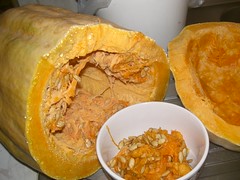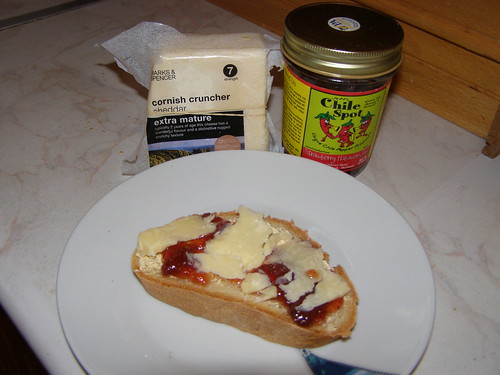GIVEAWAY! Scroll down to the end of the post for a chance to win a beauty care package with some natural cosmetics for organic beauty.
I was very touched to hear Tina Turner say in an not-so-new interview that she has never done drugs or smoked, nor does she drink a lot of alcohol, which of course all goes against the lifestyle she lives and the people she mingles with, notwithstanding a past troubled relationship. It gives me the courage to declare that neither have I ever done drugs, or smoked, or gotten drunk (I once drank a lot of wine at a NZ party because there was no water being offered with the salty food, only alcohol, but it did not make me drunk - it actually had a very sobering effect on me, making me very sleepy), and this is not because I'm some kind of prim and proper goody-two-shoes, as people often stereotype 'boring' people who have not lived their lives to full extremes: I simply didn't feel any desire to get drunk, take drugs or smoke.
I've always had a passion for natural foods and products, which I was able to develop to a great extent when I came to live in Crete. Here, it is very easy to live as naturally as you want/can, without making a great effort or spending a lot of money, as we are generally surrounded by natural substances which we take for granted. This desire for the natural things in life put me off embracing the well-established Western habits in the beauty products sector, such as using make-up or skin products (like the majority of Greek women who 'put on their face' before they leave home, as a friend of mine once said to me). Maybe I am just lucky to be blessed with naturally good skin, which, unfortunately, my husband and children don't actually share with me - they all have very sensitive skin, something that shocked me as I slowly became familiar with the changes in their faces. Genetical inheritances aside, I am very grateful that I don't need to use what I call 'gunk'.
No one is perfect though. My Achilles' heel is actually found close to Achilles' heel - I suffer from overly dry hard cracked skin on the soles of my feet, something I seem to vaguely remember only my father suffering from (but not the rest of my family). But I also know that that's just an excuse: I confess that I don't actually take care of my feet. I walk around barefoot in and around my home throughout the year (with socks only when it's really cold) and I hardly ever wear anything other than flip-flops during summer. I practically deserve to have dry cracked skin on the soles of my feet.
Whether this condition causes you pain, or you simply feel that it looks very unsightly, there is little you can do to alleviate the condition if you don't use some kind of skin softener. Natural remedies for controlling this problem are time-consuming and rather messy. Applying a mashed banana and honey poultice on a regular basis isn't cheap, nor is it practical to keep applying olive oil on the soles of your feet - imagine all the stains... In my quest to keep things natural, I bought two rather expensive products packaged in attractive clip-top preserving jars from a well known store... and found that they simply DID NOT work! These products put me off buying anything else for a long time. I then bought a cheaper supermarket product which worked much better than the expensive 'natural' stuff (which I realised was more about supporting good causes than actually being effective for what they were being sold as) but it contained ingredients that would only be recognisable to chemists, eg Benzyl Benzoate, Betaine, Cetearyl Alcohol, Myristyl Myristate, P-Anisic Acid... It's really sad to feel that you need to resort to smearing chemicals on your body on a regular basis to make you feel good.
In my search for a completely natural and cheap product for my problem, I came across Aphrodite's Embrace (after the Greek goddess of love) which promotes beauty products with the motto: "Go ahead, have a taste"! I contacted the site owner, Michelle Lasher, a young mother who created a range of natural beauty products during her pregnancy when she suddenly realised that she was using substances on her body that could affect her unborn child. She began experimenting with products she made herself, using completely natural substances, which she is now selling online. I think it's true to say that in this day and age, more and more people are turning back to nature, having tired of chemically saturated products that harm us in such subtle ways that we really can't work out which one causes our irritations, as we imbibe so many artificial products via so many manufactured food and beauty products, not to mention the general polluted state of the air through means of transport, chimneys etc. So Michelle's products are regarded as highly desirable in our times.

 On hearing that I live in Greece, Michelle was overjoyed: her husband is Greek - now that is an amazing coincidence, especially since we really did not know anything about each other! She was also very excited to hear about my website and my interest in natural products. Michelle directed me to the product I could use to help soothe my cracked dry heels: her homemade organic Baby Bottom Antispetic Healing Cream (US$8), which contains just coconut oil, olive oil, beeswax, tea tree and lavender essential oil - and nothing else! I find all these ingredients recognisable and pronounceable.
On hearing that I live in Greece, Michelle was overjoyed: her husband is Greek - now that is an amazing coincidence, especially since we really did not know anything about each other! She was also very excited to hear about my website and my interest in natural products. Michelle directed me to the product I could use to help soothe my cracked dry heels: her homemade organic Baby Bottom Antispetic Healing Cream (US$8), which contains just coconut oil, olive oil, beeswax, tea tree and lavender essential oil - and nothing else! I find all these ingredients recognisable and pronounceable.Another important consideration is that the baby bottom cream has multiple uses, as Michelle explained to me: "It can be used for any dry skin, eg dry elbows, knees, lips, knuckles; it is very healing and can be used for sunburns, scrapes and burns; it has completely replaced other antibacterial ointments in my medicine cabinet. It can be used to prevent stretch marks in pregnancy. If I have any irritated skin, no matter what it is, that is the first thing I put on it. I have a friend that likes it for his eczema." Most of us are fooled by the labelling of commercial beauty products which usually designate a specific use, and we end up buying more products than we need when one product could have done more than one job. People are getting tired of being fooled by big business.

 I decided to place an order for the healing cream - the prices at Aphrodite's Embrace seemed quite reasonable - which Michelle said would be packed with a gift of her Lip Quenching Balm (US$2.50) containing beeswax, coconut oil, olive oil and peppermint essential oil. On opening the package (which conveniently fit into my mailbox and arrived only a week after I ordered from Texas to Crete!), I was also surprised to find some more gifts: some Honey Face and Lip Exfoliating Scrub (US$5) containing honey, sugar, baking soda, oatmeal, olive oil, tea tree and lavender essential oils, and a Deep Moisturizing Face and Body Lotion (US$6) containing coconut oil, beeswax and lavender essential oil and extra virgin olive oil. "Try them," Michelle emailed me, "and tell me what you think." I couldn't wait!
I decided to place an order for the healing cream - the prices at Aphrodite's Embrace seemed quite reasonable - which Michelle said would be packed with a gift of her Lip Quenching Balm (US$2.50) containing beeswax, coconut oil, olive oil and peppermint essential oil. On opening the package (which conveniently fit into my mailbox and arrived only a week after I ordered from Texas to Crete!), I was also surprised to find some more gifts: some Honey Face and Lip Exfoliating Scrub (US$5) containing honey, sugar, baking soda, oatmeal, olive oil, tea tree and lavender essential oils, and a Deep Moisturizing Face and Body Lotion (US$6) containing coconut oil, beeswax and lavender essential oil and extra virgin olive oil. "Try them," Michelle emailed me, "and tell me what you think." I couldn't wait! |
| I live in a hot country, but this package from Texas, USA came to Crete, Greece in perfect condition - despite being knocked about during transportation, nothing leaked or looked melted or seeped out of the packaging. The products in the above photo are exactly the same products that were photographed in Michelle's home in the smaller photos above. Michelle sent me - she had photographed them before sending them to me. |
And finally, the baby bottom cream: it's absorbed quickly by the skin, and again it leaves a nice non-oily finish, two qualities which are very important elements of a good foot skin softener. Once you apply it, you can't walk around much until it is absorbed, and you don't want an oily sensation because it leaves residues on your socks/shoes. Another very important feature of foot skin softener is how often you need to reapply it; it's simply not something you can do every day/night because it limits your mobility. I've used this product once this week, and I don't feel I need to reapply it until the week passes - I would need two applications with the chemically-saturated supermarket product. So it really is quite effective.
It's a nice feeling to know that I can feed my skin in the same way that I feed my body, with completely natural products, to achieve an organic kind of beauty. And at such a reasonable price.
 |
| Giveaway! Just leave a comment on this post for a chance to win this beauty care package! |
©All Rights Reserved/Organically cooked. No part of this blog may be reproduced and/or copied by any means without prior consent from Maria Verivaki.













































